Vermont lies in the New England region of the Northeast United States. It is the sixth-smallest state in the nation in terms of total area. Here is a detailed examination of the Green Mountain State’s size, how it compares with the areas of other U.S. states and more.
Square Miles and Kilometers
Vermont’s total area covers 9,616 square miles or 24,905 square kilometers. Water covers just under 400 square miles of Vermont, around four percent of its total area. This gives Vermont a land area of 9,216 square miles or 23,869 square kilometers.
Acres
One acre is roughly equivalent to a football field (minus the end zones). There are 640 acres in one square mile. Vermont’s total area spans 6,154,240 acres.
Length and Width of Vermont
At its tallest point, Vermont extends 160 miles from north to south. Neighboring New Hampshire has a similar north-to-south measurement, stretching for 190 miles at its tallest point.
At its widest east-to-west point, Vermont stretches 80 miles. Vermont’s east-to-west measurement is wider than New Hampshire’s, which spans just 68 miles at its widest point.
Vermont is significantly wider in the northern part of the state than in the south. The width of southern Vermont shrinks to as little as 36 miles. That is roughly the width of Rhode Island.
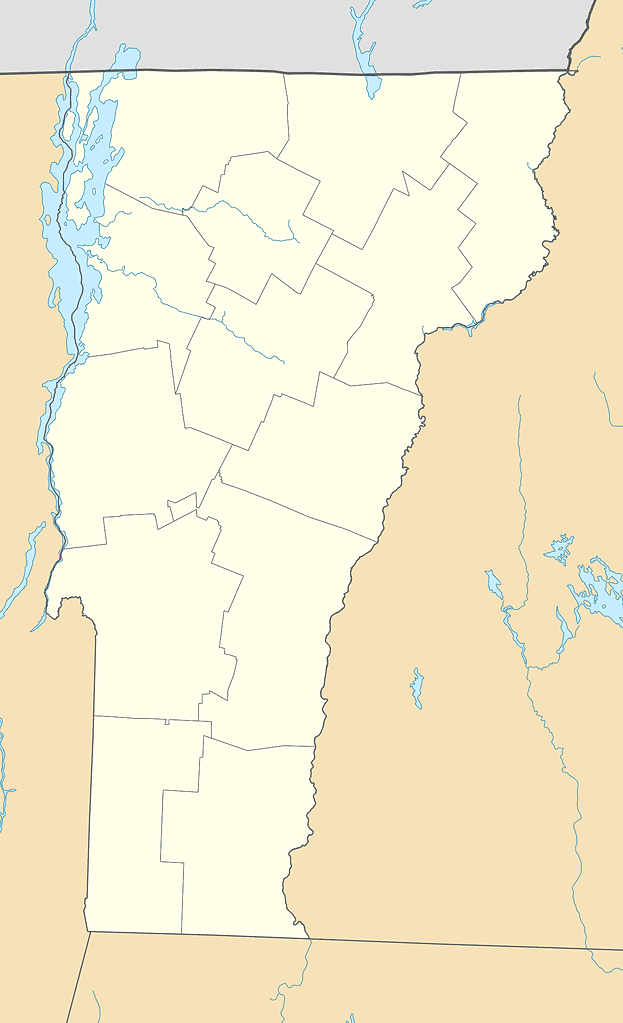
Vermont’s measurement from north-to-south is twice as long as it spans from east to west.
©Alexrk / CC BY 3.0 – License
Other States
New Hampshire is the most comparable state to Vermont in terms of size. The Granite State is only about 267 square miles (692 square kilometers) smaller than Vermont.
Alaska is the largest U.S. state by far. At 665,384 square miles (1,723,337 square kilometers), you could fit 69 Vermonts inside Alaska’s borders and still have room to spare!
Texas is the largest state in the contiguous United States. The Lone Star State is nearly 28 times the size of Vermont. California outsizes Vermont by 17 times, and Montana is more than 15 times larger than the Green Mountain State.
Rhode Island is the smallest U.S. state. Vermont is nearly eight times the size of the Ocean State.
Vermont is the largest of the six U.S. states that measure under 10,000 square miles in total area. Along with Vermont, these small states include New Hampshire, New Jersey, Connecticut, Delaware, and Rhode Island. Vermont is larger than Connecticut, Delaware, and Rhode Island combined.
Vermont accounts for 0.25% of all United States land. Similar percentages of U.S. land are found in Massachusetts, New Hampshire, and New Jersey.
Rhode Island accounts for a microscopic 0.04% of United States land, while Texas features just over seven percent of U.S. land within its borders. Every state pales in comparison to Alaska, though. An amazing 17.48% of the total area of the United States is in Alaska.
State Borders
Vermont is a landlocked state that shares borders with three other U.S. states. It is bordered by New Hampshire to the east, Massachusetts to the south, and New York to the west. It is bordered by the Canadian province of Quebec to the north.

Vermont borders three U.S. states and Quebec.
©TUBS / CC BY-SA 3.0 – License
Population
Not only is Vermont among the smallest states in the U.S., but it is also one of the least populated. With 647,064 residents (2022 U.S. Census Bureau estimate), Vermont is the second least populous state in the nation. Only Wyoming has a smaller population than Vermont.
Though it is similar in size to Vermont, New Hampshire has a far larger population. New Hampshire has 1,395,231 residents (2022 estimate), more than twice the population of Vermont.
Washington, D.C., covers about 68 square miles (176 square kilometers), less than one percent of the size of Vermont. Yet, the city of Washington, D.C., has over 24,700 more residents than the entire state of Vermont.
California is the most populous state in the nation, with 39,029,342 residents (2022 estimate). The Golden State’s population is more than sixty times that of Vermont.
Vermont is one of five states with populations under one million. The other states, along with their 2022 estimated populations, are South Dakota (909,824), North Dakota (779,261), Alaska (733,583), and Wyoming (581,381).
Population Density
While Vermont ranks 49th among U.S. states in terms of overall population, it ranks a bit higher in population density. Population density is the calculation of the number of people per square mile of land area. Vermont is the 31st most densely populated state, with 69.8 people per square mile. Minnesota has a similar population density of 71.7 people per square mile.
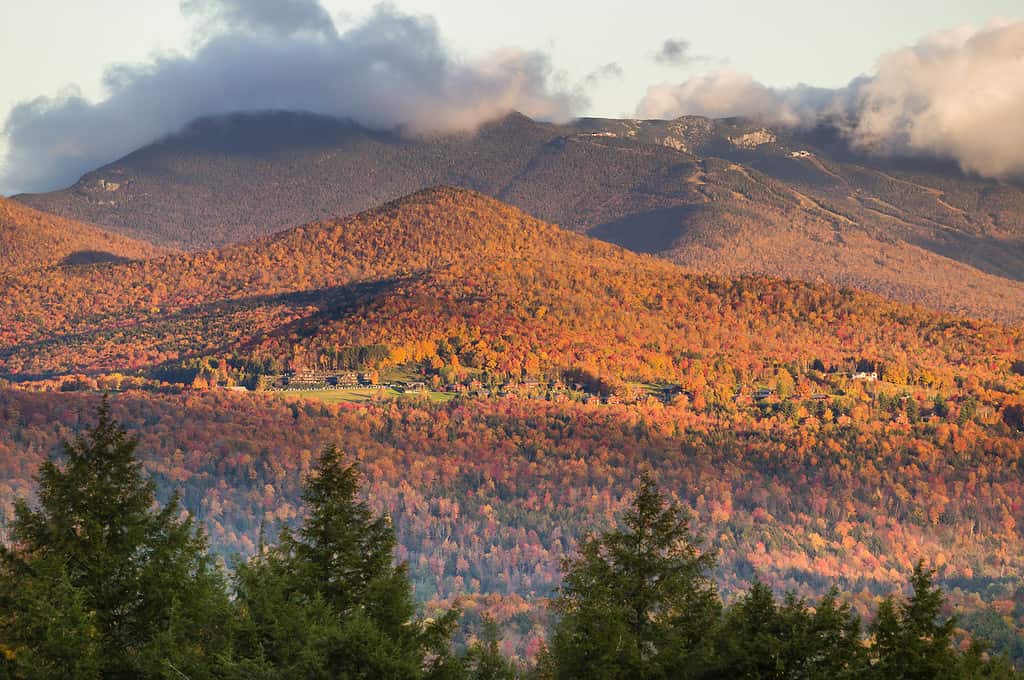
Much of Vermont’s landscape remains wild and undeveloped, giving the state a relatively low population density.
©DonLand/ via Getty Images
New Hampshire has a higher population density than Vermont, with 154 people per square mile.
Alaska surprises no one as the least densely populated state in the nation, given its massive size and small population. Here, only 1.3 people occupy each square mile.
New Jersey, the Garden State, leads the nation in population density, boasting 1,273 people per square mile.
Washington, D.C. outdoes all other places in the U.S. in terms of population density, packing 11,295 people into each square mile.
Largest Cities
Vermont does not have any major cities (population over 100,000). In fact, the largest city in the state is less than half the size of a major city.
Burlington is the largest city in the Green Mountain State, with a population of 44,595 (2022 estimate). South Burlington, which is only about two miles from Burlington, has over 20,000 residents. The Burlington metropolitan area has nearly 215,000 residents, accounting for around one-third of the state’s total population.
Montpelier is the capital of Vermont. With a population of only 8,023 (2022 estimate), it is the smallest state capital in the nation. Pierre, South Dakota, the next smallest state capital, is almost 1.7 times larger than Montpelier.
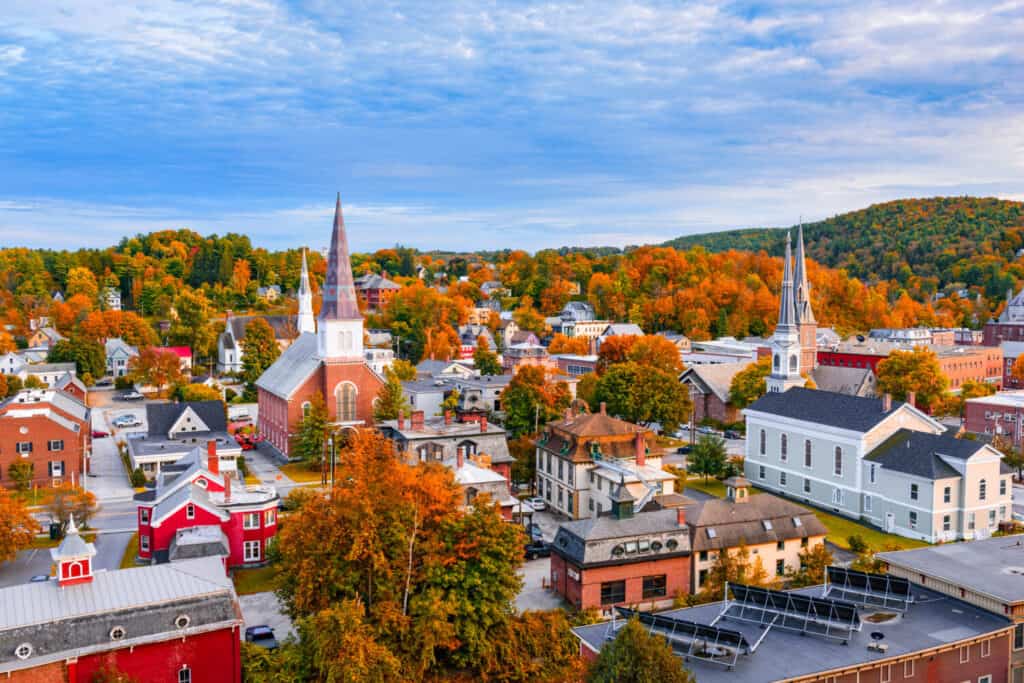
Montpelier is the smallest state capital in the U.S.
©Sean Pavone/Shutterstock.com
Counties
There are fourteen counties in Vermont, far less than the average of 62 for a U.S. state.
Windsor County is the largest county in Vermont, spanning 971 square miles (2,515 square kilometers).
The smallest county is Grand Isle County, in the northwest corner of the state. Grand Isle County only covers 83 square miles (215 square kilometers).
Chittenden County, where Burlington is located, is the most populous county in the state, with around 169,300 residents. Chittenden County has well over 100,000 more residents than the next most populous county (Rutland).
Essex County is Vermont’s least populated county with 5,994 residents.

Chittenden County has far more residents than any other county in the state.
©David Benbennick / Public domain – License
Federal Lands
There are no national parks in Vermont. The state is home to one site that is managed by the National Park Service: Marsh – Billings – Rockefeller National Historic Park.
Forests
About 78% of Vermont is undeveloped forest. That number has not changed much since the 1980s.
The Green Mountain National Forest and numerous other state and local municipal forests account for less than 20% of Vermont’s forested land. Over 80% of Vermont’s forested land is privately owned.
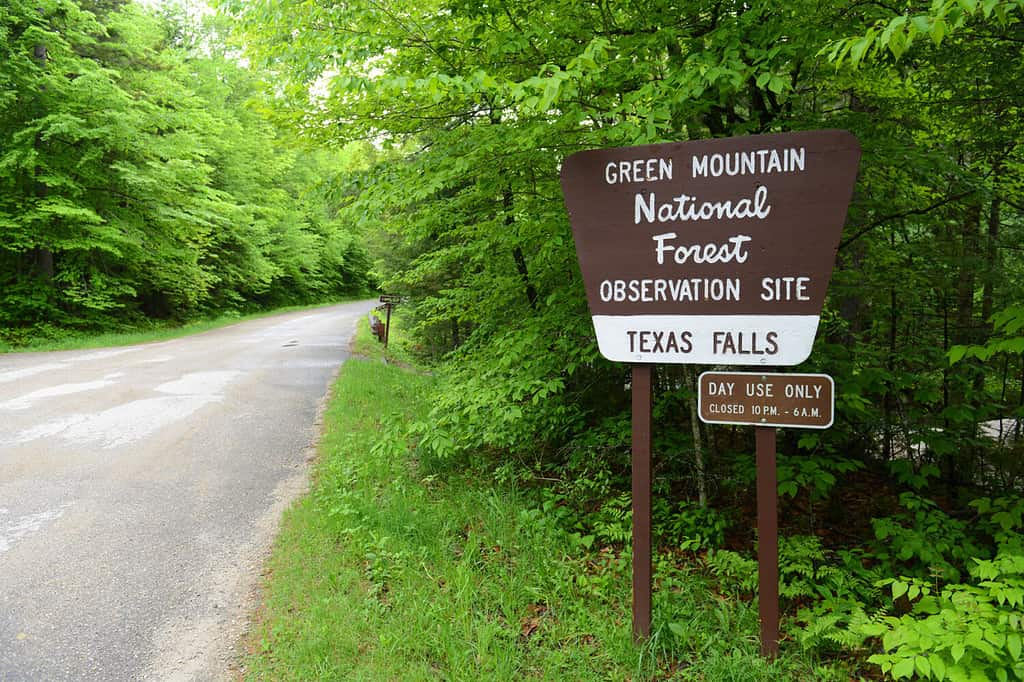
Even though 78% of the state is forested, the Green Mountain National Forest is Vermont’s only public, federally managed national forest.
©Wangkun Jia/Shutterstock.com
State Animals
Vermont has designated nine state animals. The Morgan horse was named the official animal of the state in 1961.
The other animal representatives of the Green Mountain State include the northern leopard frog (state amphibian), hermit thrush (state bird), honey bee (state insect), monarch butterfly (state butterfly), brook trout (state fish), walleye (state warm-water fish), painted turtle (state reptile), and Randall lineback cattle (state livestock).
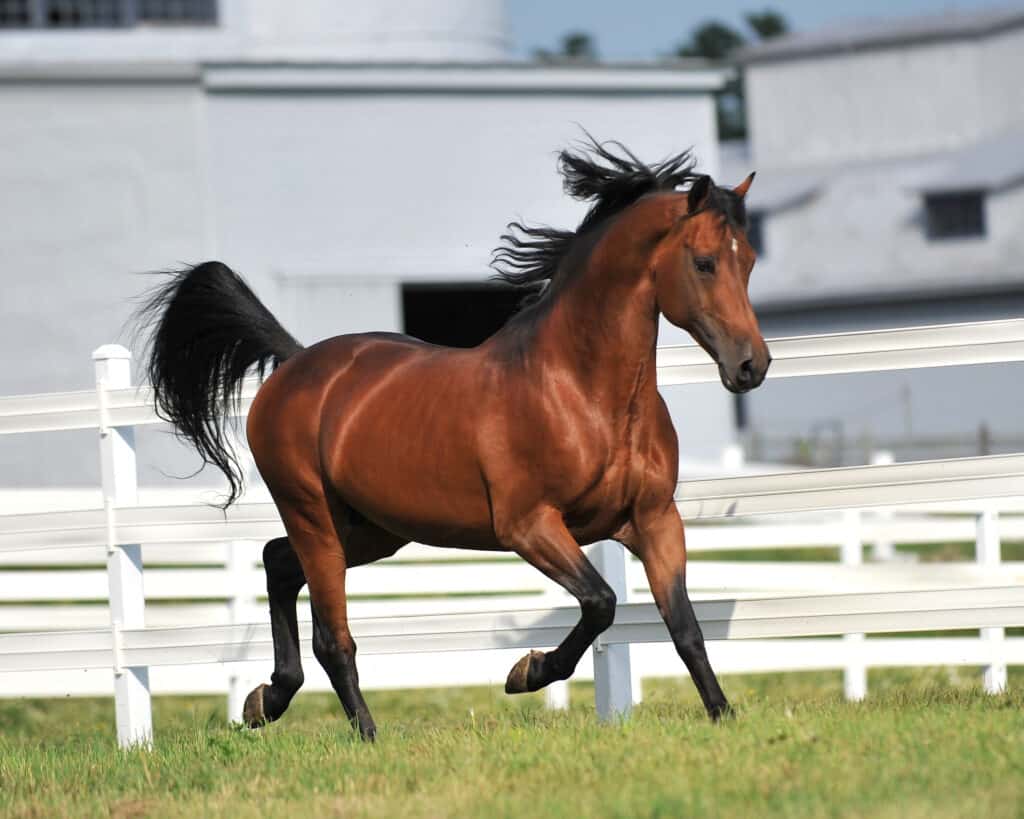
The Morgan horse is the state animal of Vermont.
©Christopher Crosby Morris/Shutterstock.com
The photo featured at the top of this post is © Ali Zifan / CC0 – License / Original
Thank you for reading! Have some feedback for us? Contact the AZ Animals editorial team.






